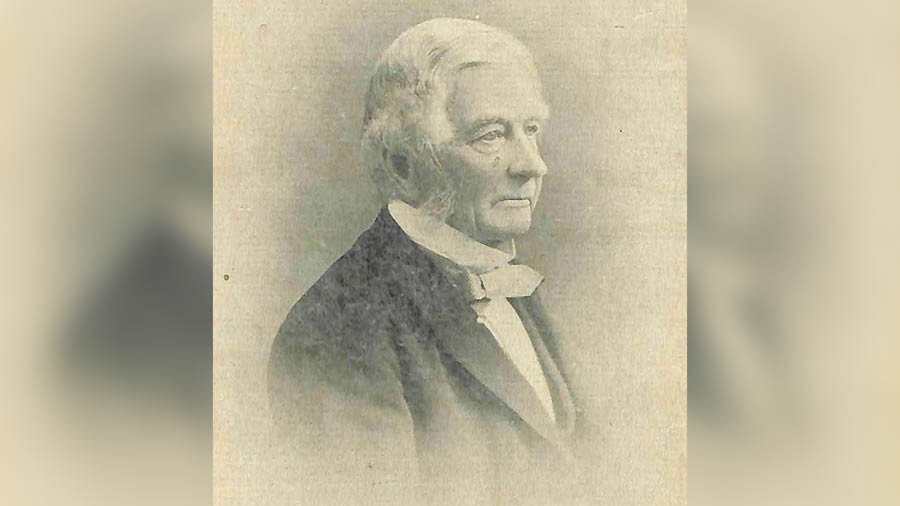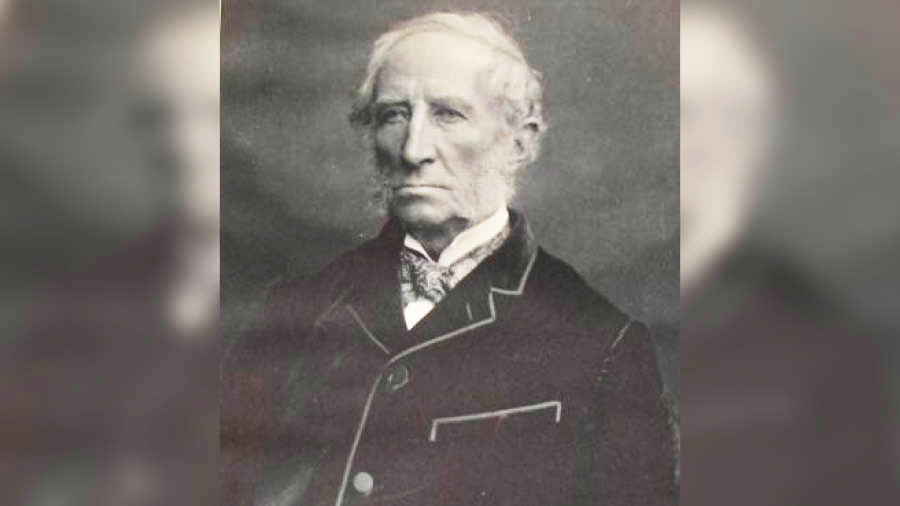In June of 1845, the East Indian Railway (EIR) Company was formed in London with an initial paid-up capital of £1 crore. The objective of this company was to establish a railway connect between the capital of British Indian territories: Calcutta and that of Mughal India: Delhi. The main protagonist of this initiative was Rowland MacDonald Stephenson (he was knighted later in life).
He was the founder, first managing director and principal Indian agent of EIR Company. It wouldn’t be an overclaim to state that Stephenson had railways in his blood – he was the nephew of the legendary George Stephenson, better known as the ‘Father of Railways’. Just like his uncle, Rowland MacDonald Stephenson was passionate about trains.

Sir Rowland MacDonald Stephenson Wikimedia Commons
During the following years, Rowland Stephenson visited India to conduct a detailed survey of the proposed route from Calcutta to Delhi. Interestingly, Stephenson and EIR Co’s efforts led to the formation of a company in Calcutta called Central Bengal Railway Company. To raise the initial capital of £15 lakhs, a lavish dinner was arranged in Calcutta’s Town Hall. The dinner spread was said to be excellent but nothing eventually came out of it. This may well have been an early scam in Bengal!
But coming back to Stephenson’s story, for the next three years, EIR Company was stuck in securing government permissions and approvals. These delays would later cost Stephenson and the Company a big deal. Eventually, provisional approval to run trains between Calcutta and Runeeigunje (Raniganj) was finally received in 1850. With renewed vigour, Stephenson returned to India the next year and personally oversaw the laying of tracks over the next three years. By the end of 1853, tracks were ready for a run between Calcutta and Pundooah (Pandua). But the vagaries of fate now dealt three cruel hands to Stephenson.

The logo of the East Indian Railway Wikimedia Commons
Firstly, sample rail carriages for manufacturing reference were being brought over from England in a ship called Goodwill which struck sandheads near Sagardwip and sunk. The chief engineer George Turnbull arranged to get coaches made by two leading car makers of Calcutta using his own design but days were lost. Secondly, the ship bringing over the engine sailed to Australia instead of docking at Calcutta due to some miscommunication. Although the engine was later brought to Calcutta later, precious time was lost. Thirdly, the French government at Chandernagore (Chandannagar) objected to the plans, claiming the track was passing through their territory. This matter was also sorted but once more, EIR Company & Stephenson’s schedule was delayed.
Eventually, on June 28, 1854, the engine successfully travelled from Howrah to Pundooah (Pandua). Another, extended trial from Howrah to Hooghly was completed on August 11, 1854. A posse of journalists from the Bengal Hurkura and the Indian Gazette travelled this time in the coaches. As per their reports filed the next day, the train left Howrah at 8.30am and reached Hooghly at 11.01am. They further noted that the journey was pleasant without any rocking or such. They closed their reports recommending construction of a bridge over the river between Calcutta and Howrah bearing in mind the perils of crossing the river in peak monsoon.

George Turnbull (1809-1878) Wikipedia
A notice in the newspaper in August of 1854 read thus —
On 15th of this month, Tuesday, trains will depart from Howrah and Hooghly as below:
From Howrah morning 1030 AM and evening 1730 PM From Hooghly morning 0813 AM and evening 1538 PM
Stops at Bally, Serampore (Srirampur) and Chander Nagore (Chandan Nagar). From 1st September, train will run between Howrah and Pundooah (Pandua) with stops at all stations.
Those who are interested in cheap monthly passes are requested to apply for forms at nearby station and submit the filled-up forms at the earliest to the Managing Director and Agent. The fare for monthly passes will be finalized later. No monthly pass will be issued before 1st January of next year.
12th August, 1854 R. MacDonald Stephenson
29, Theatre Road, Calcutta
Ninety three years before our Independence, on August 15, 1854, the first locomotive from Howrah rolled out 90 minutes ahead of time and reached Hooghly at 10.01am. Of course, the first locomotive of India had already made its journey by then: on 16th April, 1853 from Bori Bunder to Thane. But for the initial delays for permissions and later due to the shipping mishaps and the French dispute, this honour may well have belonged to East Indian Railway Co, Rowland MacDonald Stephenson and Calcutta.
Source acknowledgement: Kolikatar Darpan (Calcutta Mirror) Parba 1 (Volume 1), Chapter 10 – Radharaman Mitra
